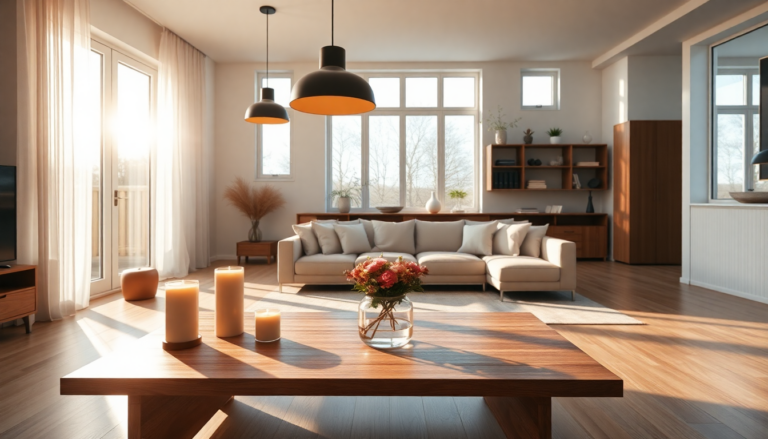Argomenti trattati
When it comes to interior design, have you ever considered how important lighting really is? Often dubbed the jewelry of the home, the right lighting can transform a space just like a stunning necklace can elevate an outfit. Imagine walking into a room where the lighting not only serves a function but also creates a vibe that feels warm and inviting. In this piece, we’ll delve into the essentials of lighting design, exploring how to set the perfect mood and navigate the myriad of fixture options available to you.
The Transformative Power of Lighting
Lighting wields a unique power to transform any room, making it feel both inviting and distinctly personal. Have you ever noticed how the right lighting can change your perception of a space? A well-lit room can appear larger and more open, while dimly lit areas may feel cramped or unwelcoming. From my experience with design principles, it’s clear that lighting goes beyond mere functionality; it’s about forging an emotional connection to the environment around you.
Moreover, the interplay of light and shadow can add depth, creating visual interest and texture. Think about it: different types of lighting—ambient, task, and accent—each serve their own purpose. Ambient lighting provides a general glow, task lighting focuses on specific areas for activities like reading or cooking, and accent lighting highlights artwork or architectural features. By skillfully layering these elements, you can craft a cohesive and inviting atmosphere that draws people in.
Curated Lighting Solutions for Modern Spaces
In my journey as a digital marketer, I’ve learned that the right products can tell a captivating story. This principle rings true for lighting, too. When putting together a collection of fixtures, think about a variety of styles that cater to different tastes. For example, minimalist pendants can bring a sleek touch to a modern kitchen, while vintage sconces can infuse character into a rustic living area.
Let’s explore some standout lighting options that can act as focal points in your home. One eye-catching piece is a sculptural pendant that embodies organic modernism, adding both texture and artistry to your kitchen. And who wouldn’t love playful table lamps with unexpected color combinations? They can bring personality to a home office or reading nook, making these spaces not just functional but also visually delightful.
Chandeliers, too, can redefine the atmosphere of dining areas. A well-chosen chandelier, whether it’s traditional or contemporary, can serve as a stunning centerpiece that captures attention and sparks conversation. The key is to achieve a balance between aesthetics and functionality; the ideal chandelier should illuminate as well as enhance the room’s overall design.
Practical Strategies for Effective Lighting Implementation
Implementing successful lighting solutions requires thoughtful planning and an understanding of each space’s unique features. Start by evaluating how much natural light each room gets. This insight will guide your decisions on fixture types and placements. For example, rooms filled with daylight may benefit from softer ambient lighting, while darker spaces might need brighter task lighting to feel comfortable.
When choosing fixtures, consider their size in relation to the room. A large chandelier can dominate a small space, while tiny fixtures might get lost in a grand foyer. Also, think about the color temperature of your bulbs; this choice can significantly impact the room’s mood. Warm white bulbs create a cozy, inviting atmosphere, while cooler tones can energize a space.
Don’t overlook the benefits of smart lighting technology! With innovations like smart bulbs and dimmers, homeowners can easily adjust their lighting to fit various activities and moods. This flexibility adds a layer of sophistication to modern living environments.
Measuring Success in Lighting Design
Like any design endeavor, evaluating the success of your lighting strategies is crucial. Track metrics such as energy efficiency through your utility bills or smart home systems. Don’t forget to gather feedback from those using the space; surveys can provide invaluable insights that inform future improvements.
In conclusion, the art of lighting design goes far beyond simple illumination. It encompasses the ability to create a distinct atmosphere, enhance functionality, and reflect personal style. By approaching lighting with a strategic mindset and a sharp eye for detail, you can turn your home into a sanctuary of comfort and elegance. So, are you ready to let your lighting tell your story?

